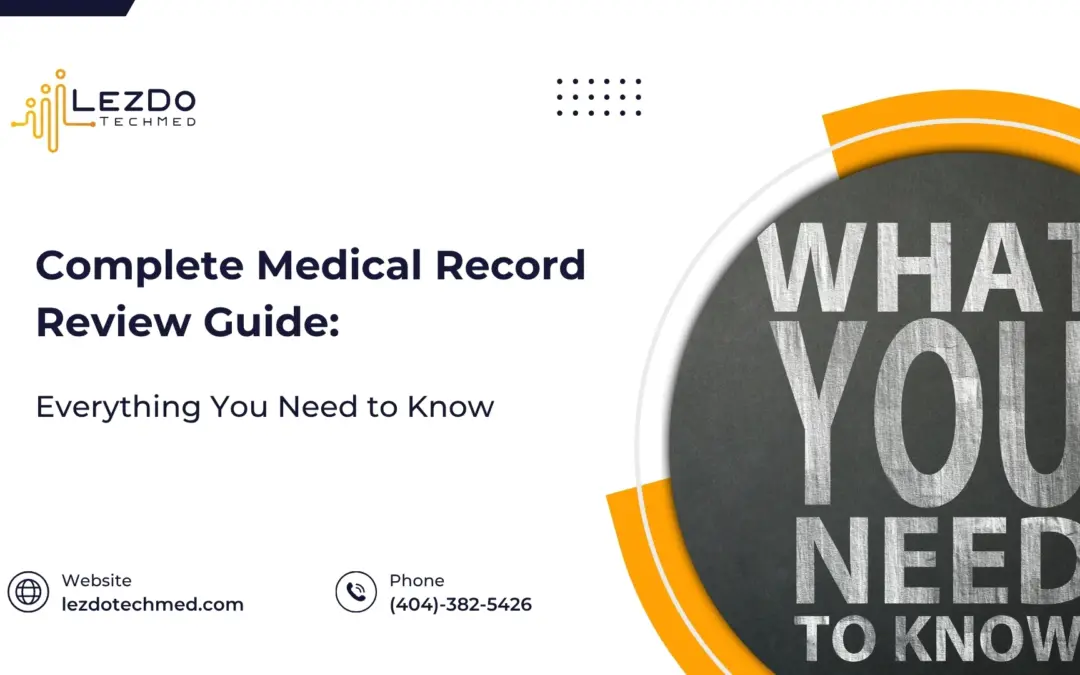You sent the personal injury demand letter weeks ago.
You spent hours gathering medical records, calculating damages, and presenting what exactly happened. Moreover, you were confident that the numbers made sense.
But, even after weeks, no replies, no offer, or not even a quick acknowledgment.
Frustrating? Absolutely.
It’s a common problem in personal injury cases. Demand letters often get ignored, not because the claim is weak, but because the letter didn’t grab the insurer’s attention to make him take immediate action.
If your letter gets silence in response, here’s why it might have been happening and know how to fix that.
Reasons Why Your Demand Letter is Ignored
1. No clarity in what you demand
Your demand letter may explain the accident and injuries in detail, but it fails to provide a well-supported number for settlement. If it just beats around the bush without any specifics, it may not bring the intended outcome.
The adjuster won’t guess what you want. If your demand is not clear, they’ll either ignore the letter or delay the case further by asking for clarification. Moreover, if you try to inflate the number to get a higher settlement, they may deny it straight away.
Solution:
In addition to presenting your client’s injuries and damages, include a specific dollar amount. Let it be in bold or underlined to make it visible clearly.
For example: “Based on the injuries, treatment costs, lost wages, ongoing pain and suffering, and expected future medical care, we demand a settlement of $100,000.”
Ensure the number is real and can be backed by solid evidence. Accurate demand can bring positive results.
2. Weak or missing evidence
Do you think your narration of the incidents and listing of injuries can compel action? No. Insurance adjusters do not want just the narrative, but solid proof. If your demands are not supported by strong and solid evidence, they are not likely to take them seriously.
Common issues might include:
- No medical bills or records attached
- No proof of lost income
- Vague injury descriptions without a doctor’s notes
- Missing photos of injuries and property damage
Solution:
Attach all vital supporting documents and label them clearly as Exhibits with specific numbers noted for each. For example: “Exhibit A- Medical Bills,” “Exhibit B- Wage and Tax Statement.”
Explain the connection between the evidence and your demand. If you just attach the evidence and think that it serves its purpose, it may not work. You have to refer to each of the exhibits in your demand letter and explain why it justifies your demand. It should be convincing to the insurer that the amount is reasonable for the damage.
3. Too long or too short personal injury demand letter
Writing lengthy demand letters explaining every detail may not end in the way you expect. Even if it is too short, it may give a feeling that the demand is not that significant, and the letter is rushed. Both these types of demands can be ignored.
Do you feel that adjusters are free to read through your 10-page-long demand letter? They would either skim through your letter, missing vital facts, or just set it aside for later. If your demand is short, it might miss important details, leaving the insurers to assume what happened or what you are demanding. They won’t sit patiently analyzing your demands or call you for clarification.
Solution:
Two to four pages are long enough to tell the story and present your case, but short enough to stay focused. You can use headings and bullet points to break things up. Make the content easy to read, even at a glance.
4. No sense of urgency
Ending the letter with a polite “please respond at your earliest convenience” may create a feeling that it is not that urgent to respond. The insurers may push it aside to the end of their priority list, as it doesn’t give a reason to act quickly. Without marking it as urgent, you can’t let them understand that.
Solution:
It is better to include a clear deadline. For example:
“Please respond within 14 days of the date of this letter. If we do not receive a response within the noted time, we will proceed with filing a lawsuit.”
Be polite but firm in your expression. You need not be aggressive in your tone but let them understand they cannot wait for eternity to give a response.
5. Ambiguity on liability
You may think that the opposition might understand the liability of their client. However, if you do not clearly establish who’s at fault, the adjuster may question the claim or deny it. Failing to explain who is liable gives an appearance that the fault is still in dispute. The adjuster may claim that the claimant, too, is partially responsible, and to hide that, you avoid the topic.
Solution:
Include a brief liability section in your letter. Explain how the other party was at fault with proof from police reports, witness statements, etc. Establish why your client bears no comparative negligence. Reinforce that liability is clear, and the only remaining question is damages.
6. Exaggerated demands
Inflated demands that seem unreal can be neglected. For example, the total expenses are $25,000, but if your letter demands $200,000 without much explanation or evidence, your demand will not be taken seriously. Unreasonable demands can appear to be negotiation tactics, or as if you don’t estimate your case’s real value.
Solution:
Giving a reasonable amount and breaking it down into categories can bring credibility. For example: List out the expenses clearly, like,
- Medical expenses: $12,000
- Lost wages: $2,500
- Pain and suffering $30,000
- Future treatment (if applicable): $21,000
- Total: $65,500
Do not stop with just listing out but explain how you calculated each part, especially non-economic damages like pain and suffering. You can include similar case outcomes or jury verdicts from your area as examples.
7. The letter feels mechanical or aggressive
Letters that appear to be generated by machines do not stand a chance against those with a personal touch. Data filled in a form or template may lack emotions and fail to convey the pain encountered by the claimant. If you use negative or abusive language, the opposing party is less likely to respond to your letter.
Solution:
Start with a brief personal story about how the injury affected your client’s life. When your demand expands before the eyes of the insurers with a human element, it can persuade them to consider prompt action. For example:
“Since the accident, Mrs. Adams has struggled to walk without pain. She has missed family events, been unable to return to work, and now faces months of physical therapy and injections.”
You need not be dramatic. It is to remind the adjuster that there’s a real person behind the claim.
Moreover, maintaining a professional and assertive tone is generally more effective.
8. No follow-ups
Your responsibility doesn’t end with sending the demand letter. You need to follow up. If you don’t do so, the adjuster may assume that you’re not serious about the demand or that you’ve moved on.
Solution:
Follow up within a week after sending the letter. You have to confirm that the letter was received, ask when you can expect a response, and importantly, document the communication.
If they fail to respond by the deadline, send a second letter or make a phone call. Only when you constantly pursue them on the matter it will give a sense of importance to the case and make it harder for them to ignore your demand.
9. Letter sent to the wrong person or department
Even if you write the perfect demand letter, but it lands on the wrong desk, it may not bring desired results. Large insurance companies and law firms have multiple departments. If your letter isn’t addressed properly or lacks claim-specific details to reach the right desk, it can get lost or delayed.
Solution:
Before sending your demand letter, confirm the correct recipient, whether it is an insurance adjuster, claims manager, or defense attorney. Include claim numbers, dates, and client information clearly at the top of the letter. Remember to follow up to confirm receipt.
10. Failing to send by certified mail
Sending the demand letter without a return receipt via certified mail may give the insurance company a chance to deny receiving it. It can create difficulties for you to meet the deadline for a response.
Solution:
Ensure to send the demand letter via certified mail with an acknowledgment receipt. This can help you track down if the opposing party responds within the deadline for receiving the demand.
Seeking High Quality Demand Letter Service?
Wrapping up,
Your demand letter is like the opening argument in your case. Done right, it sets the tone for a quick, fair resolution. Done poorly, it delays or derails your claim.
If you make the busy insurer’s job easy, it’s more likely you get a timely response. Ensure you check out the below to create a powerful demand letter:
- A clear demand
- Solid evidence
- A professional, organized letter
- A timeline for response
- A human touch
Ready to make your next demand letter impossible to ignore? Use these steps, and you might just get the response and the compensation you deserve.











